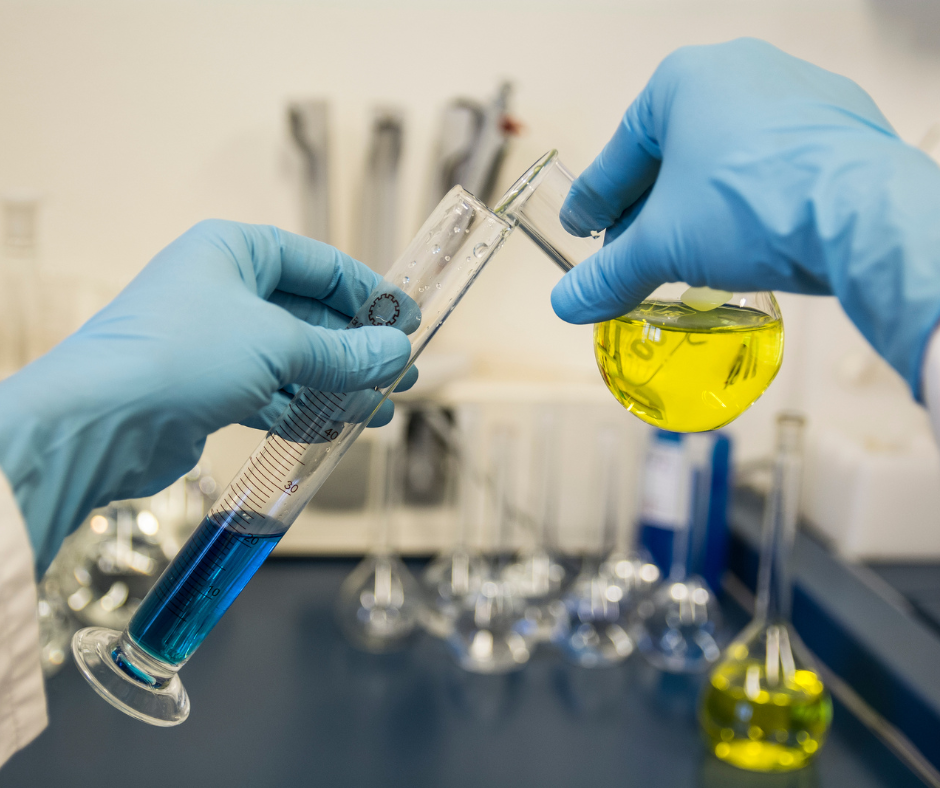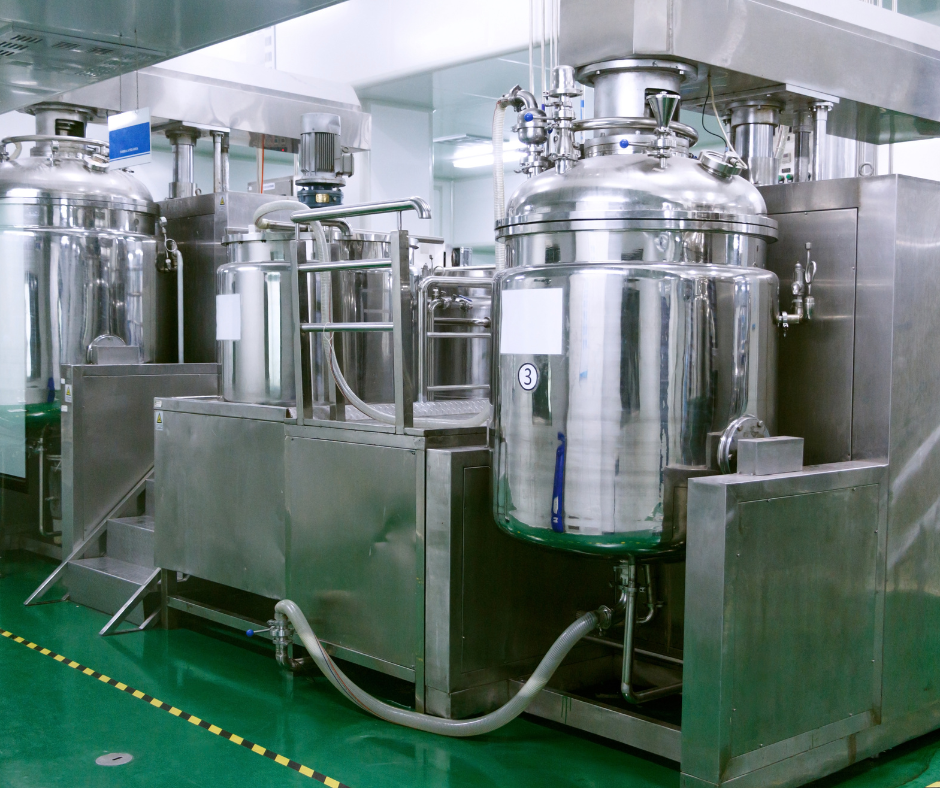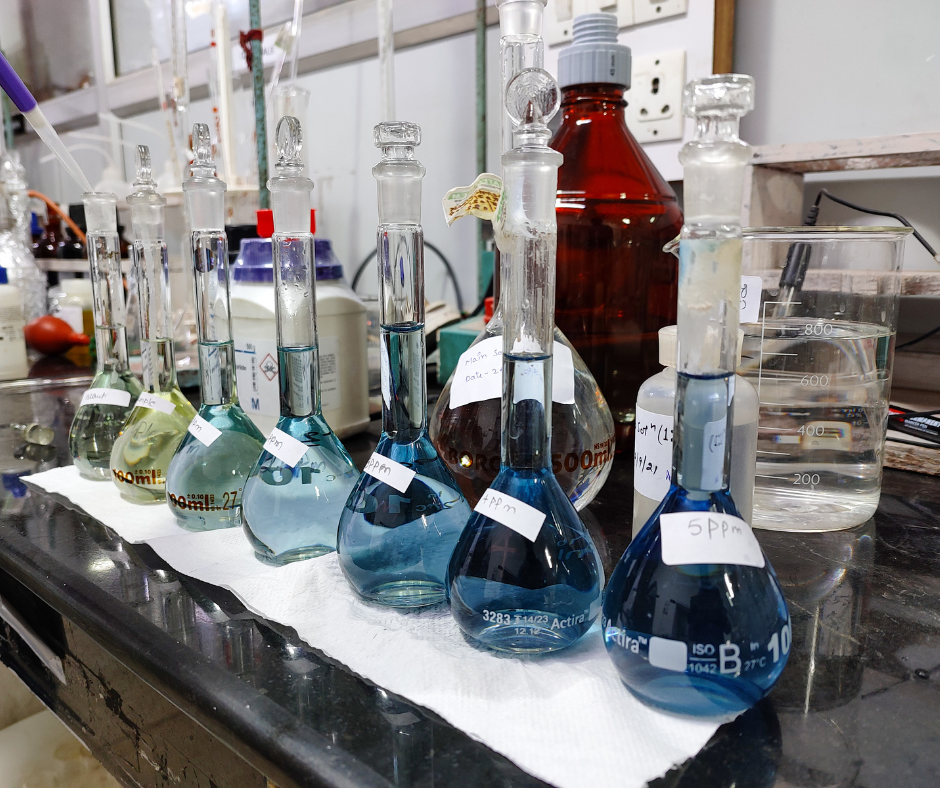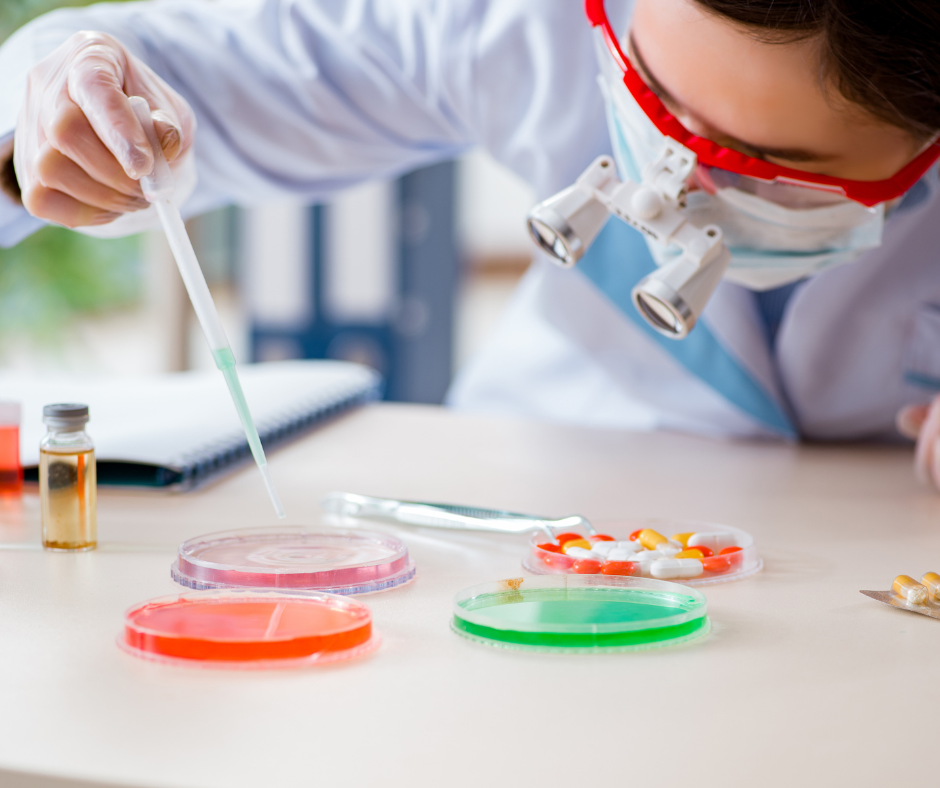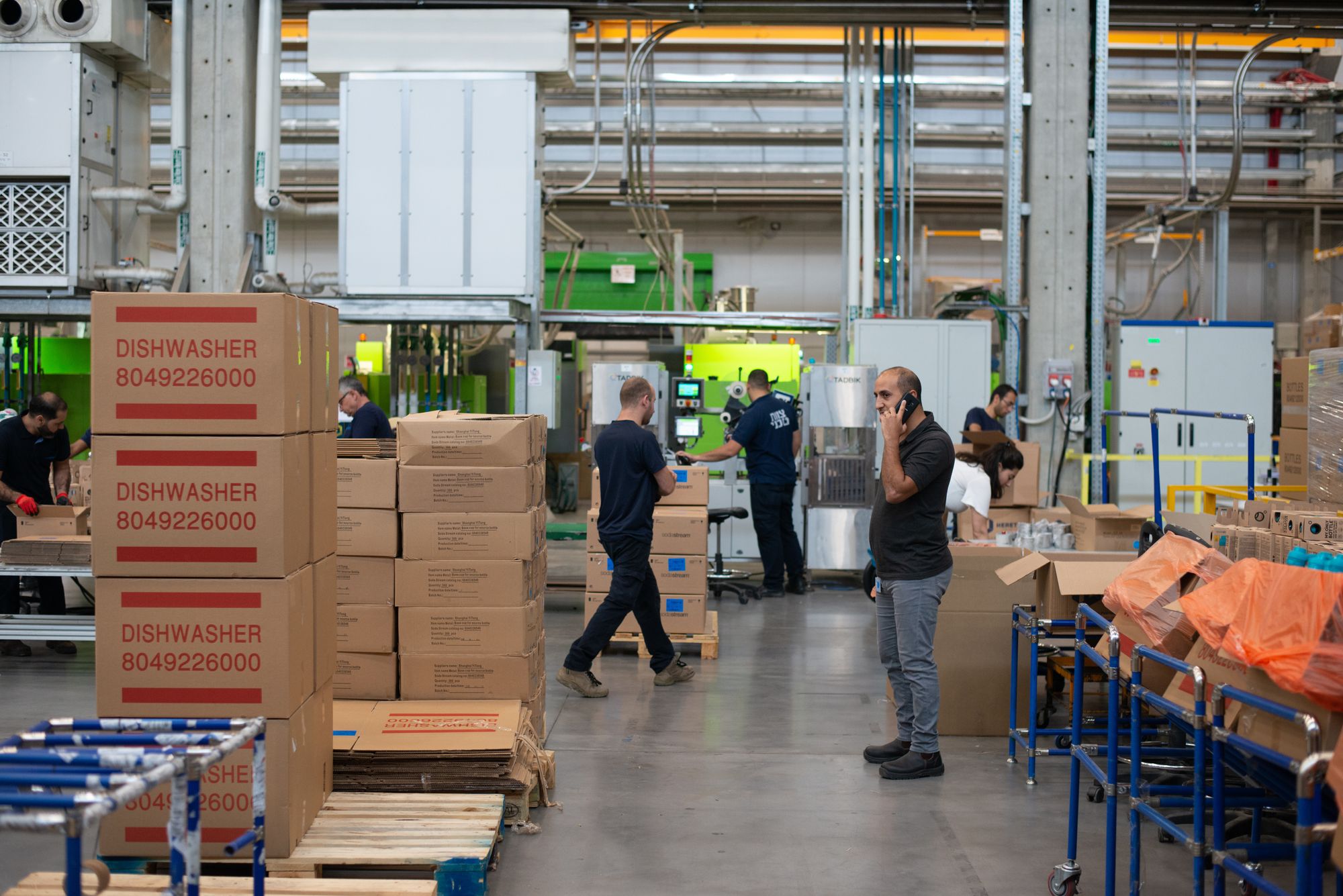Chemical synthesis is the process of creating new molecules from simpler starting materials. Over the past few decades, there have been many advances in this field that have enabled chemists to synthesize increasingly complex and sophisticated molecules.
In this essay, we will explore some of the latest developments in chemical synthesis:
- C-H Functionalization
- Flow Chemistry
- Machine Learning in Chemical Synthesis
- Photocatalysis
- Sustainable Synthesis
- How can Deskera Help You?
- Conclusion
- Related Articles
C-H Functionalization
C-H functionalization is a powerful technique for selectively modifying carbon-hydrogen (C-H) bonds in complex molecules. This approach offers several advantages over traditional synthetic methods, including reducing the number of steps required to synthesize a target molecule and minimizing waste by avoiding the need for pre-functionalized starting materials.
The selective functionalization of C-H bonds is challenging because these bonds are typically inert and unreactive under traditional synthetic conditions. However, recent advances in catalysis have enabled the development of new methods for activating and functionalizing C-H bonds in a selective and efficient manner.
One promising approach for C-H functionalization involves the use of transition metal catalysts, which can activate C-H bonds and facilitate the addition of various functional groups. For example, in 2021, researchers reported the development of a palladium catalyst that enables the selective functionalization of benzylic C-H bonds in complex molecules, which could have important implications for drug discovery and materials science.
Another approach for C-H functionalization involves using radical chemistry to selectively activate and functionalize C-H bonds. This approach has the potential to enable the functionalization of more challenging C-H bonds, such as those in aliphatic and sp3-hybridized carbons. In 2020, researchers reported the development of a visible-light-promoted radical C-H functionalization reaction, which enabled the synthesis of a range of complex natural products.
Overall, C-H functionalization is a rapidly developing area of research in chemical synthesis, with many new methods and techniques being developed to enable the selective and efficient modification of C-H bonds. These advances have the potential to enable the synthesis of increasingly complex and sophisticated molecules, which could have important implications for a wide range of fields, from materials science to drug discovery.
Flow Chemistry
Flow chemistry is a technique for conducting chemical reactions in a continuous flow system, rather than in a batch reactor. This approach offers several advantages over traditional batch synthesis methods, including improved reaction control, higher selectivity, and faster reaction times.
In flow chemistry, reagents are continuously pumped through a reactor, where they undergo the desired chemical transformation. The reaction conditions can be precisely controlled by adjusting the flow rate, temperature, and other parameters, which can enable the synthesis of complex molecules with high selectivity and efficiency.
One of the key advantages of flow chemistry is its ability to conduct reactions at high temperatures and pressures, which can enable the synthesis of molecules that would be difficult to access using traditional batch synthesis methods. In addition, flow chemistry can be used to conduct reactions that are sensitive to oxygen or moisture, which can be challenging to perform in a batch reactor.
Flow chemistry has been used for a wide range of chemical transformations, including organometallic reactions, photochemistry, and biocatalysis. For example, in 2021, researchers reported the use of a flow reactor for the synthesis of complex heterocyclic molecules, which are important building blocks for many pharmaceuticals and natural products. The researchers were able to perform a key reaction step in just a few minutes, with high selectivity and yield.
Overall, flow chemistry is a rapidly developing area of research in chemical synthesis, with many new methods and techniques being developed to enable the synthesis of complex molecules using this approach. These advances have the potential to improve the efficiency and sustainability of chemical manufacturing, while enabling the synthesis of increasingly complex and sophisticated molecules with high selectivity and efficiency.
Machine Learning in Chemical Synthesis
Machine learning is increasingly being used in chemical synthesis to enable the design and optimization of new chemical reactions and molecules. This approach involves training machine learning models on large datasets of chemical reactions and molecular properties, which can then be used to predict the outcomes of new reactions and design new molecules with desired properties.
One area where machine learning is being used in chemical synthesis is in the design of catalysts for organic reactions. Catalysts are used to facilitate chemical reactions and can enable faster reaction times, higher selectivity, and improved yield. However, the design of new catalysts can be challenging, as it involves balancing multiple factors, such as reactivity, stability, and selectivity.
Machine learning can be used to predict the properties of new catalysts based on their chemical structure, enabling the design of more effective catalysts with desired properties. For example, in 2020, researchers reported the use of machine learning to design a new catalyst for the synthesis of lactams, which are important building blocks for many pharmaceuticals and natural products. The researchers trained a machine learning model on a dataset of known catalysts and reaction conditions, which enabled them to predict the properties of new catalysts and optimize reaction conditions for higher yield and selectivity.
Another area where machine learning is being used in chemical synthesis is in the design of new molecules with desired properties. This approach involves training machine learning models on large datasets of molecular properties, such as solubility, bioactivity, and toxicity, which can then be used to predict the properties of new molecules and guide their design.
Machine learning has the potential to accelerate the drug discovery process by enabling the rapid screening of large databases of molecules for desired properties. For example, in 2021, researchers reported the use of machine learning to design new inhibitors of an enzyme involved in cancer cell metabolism. The researchers trained a machine learning model on a database of known inhibitors, which enabled them to predict the properties of new molecules and design a novel inhibitor with high potency and selectivity.
Overall, machine learning is a rapidly developing area of research in chemical synthesis, with many new methods and techniques being developed to enable the design and optimization of new chemical reactions and molecules using this approach. These advances have the potential to accelerate the discovery of new drugs and materials, while reducing the time and cost required for chemical synthesis.
Photocatalysis
Photocatalysis is a type of catalysis in which light energy is used to initiate and drive chemical reactions. In this process, a photocatalyst absorbs photons of light, which excites electrons to a higher energy state, creating electron-hole pairs. These energetic electrons and holes can then participate in chemical reactions, either by transferring their energy to other molecules or by participating in redox reactions.
One of the key advantages of photocatalysis is its ability to facilitate chemical reactions under mild conditions, such as at room temperature and atmospheric pressure, which can reduce energy consumption and costs. Photocatalysis can also enable the selective activation of specific chemical bonds, enabling the synthesis of complex molecules with high selectivity and yield.
Photocatalysis has a wide range of applications in fields such as organic synthesis, energy conversion, and environmental remediation. For example, in organic synthesis, photocatalysis can be used to activate and functionalize unreactive C-H bonds, enabling the synthesis of complex organic molecules with high selectivity and yield. In energy conversion, photocatalysis can be used to convert solar energy into electrical or chemical energy, such as in the production of hydrogen from water. In environmental remediation, photocatalysis can be used to degrade and detoxify pollutants in air and water, such as in the removal of organic dyes and pesticides.
Recent advances in photocatalysis have focused on the development of new photocatalysts with improved efficiency and selectivity. One approach involves the use of metal-organic frameworks (MOFs), which are porous materials with high surface area and tunable chemical and physical properties. MOFs can be designed to incorporate photocatalytic metal centers, enabling the efficient conversion of light energy into chemical energy. Another approach involves the use of semiconductor nanoparticles, such as titanium dioxide (TiO2), which have been extensively studied for their photocatalytic activity in environmental remediation and energy conversion.
In summary, photocatalysis is a rapidly developing area of research with many applications in fields such as organic synthesis, energy conversion, and environmental remediation. Advances in photocatalyst design and optimization have the potential to enable the development of new and more efficient photocatalytic processes, with broad implications for many areas of chemistry and materials science.
Sustainable Synthesis
Sustainable synthesis is an approach to chemical synthesis that aims to minimize the environmental impact of chemical reactions and processes, while also ensuring economic viability and safety. Sustainable synthesis involves the design and optimization of chemical reactions and processes that minimize waste, energy consumption, and the use of hazardous materials, while maximizing efficiency and yield.
There are several key principles of sustainable synthesis, including:
- Atom economy: Atom economy is a measure of the efficiency of a chemical reaction, calculated as the percentage of the starting materials that end up in the desired product. High atom economy reactions minimize waste and resource consumption, making them more sustainable.
- Green solvents: The choice of solvent can have a significant impact on the environmental footprint of a chemical reaction. Green solvents, such as water, ethanol, and supercritical carbon dioxide, are non-toxic, biodegradable, and have low environmental impact.
- Renewable feedstocks: The use of renewable feedstocks, such as biomass and CO2, can reduce the environmental impact of chemical synthesis by reducing dependence on fossil fuels and non-renewable resources.
- Process intensification: Process intensification involves the design and optimization of chemical processes to minimize waste and energy consumption, while maximizing efficiency and yield. This can involve the use of flow chemistry, microreactors, and other technologies to enable more efficient and sustainable chemical synthesis.
Recent advances in sustainable synthesis have focused on the development of new methods and techniques for improving the efficiency and sustainability of chemical synthesis. One approach involves the use of biocatalysts, such as enzymes and microorganisms, which can catalyze chemical reactions with high efficiency and selectivity under mild conditions. Biocatalysts are renewable, biodegradable, and non-toxic, making them an attractive alternative to traditional chemical catalysts.
Another approach involves the use of renewable energy sources, such as solar and wind power, to power chemical synthesis. This can enable the production of renewable chemicals and fuels, reducing dependence on fossil fuels and minimizing the environmental impact of chemical synthesis.
Overall, sustainable synthesis is a rapidly developing area of research with many opportunities for improving the efficiency and sustainability of chemical reactions and processes. Advances in sustainable synthesis have the potential to enable the development of new and more sustainable chemical processes, with broad implications for many areas of chemistry and materials science.
How can Deskera Help You?
Deskera's integrated financial planning tools allow investors to better plan their investments and track their progress. It can help investors make decisions faster and more accurately.
Deskera Books can assist you in automating your accounting and mitigating business risks. Deskera makes it easier to create invoices by automating many other procedures, reducing your team's administrative workload.
Deskera also offers a suite of integrated applications to help businesses manage their financials, inventory, and operations. Furthermore, other business aspects such as HR (Deskera People), CRM (Deskera CRM), and ERP are provided by Deskera. These could be crucial and can help short sellers keep track of their businesses and make better decisions.
Conclusion
In conclusion, chemical synthesis is a fundamental aspect of modern chemistry and plays a critical role in many areas of science and technology, from drug discovery and materials science to energy conversion and environmental remediation. Recent developments in chemical synthesis have focused on improving efficiency, selectivity, and sustainability through the use of new technologies and techniques, such as C-H functionalization, flow chemistry, machine learning, photocatalysis, and sustainable synthesis.
These advances have the potential to enable the development of new and more efficient chemical processes, with broad implications for many areas of science and technology. As research in chemical synthesis continues to evolve, we can expect to see further innovations and breakthroughs in the years to come, driving new discoveries and applications that benefit society and the environment.
Related Articles
